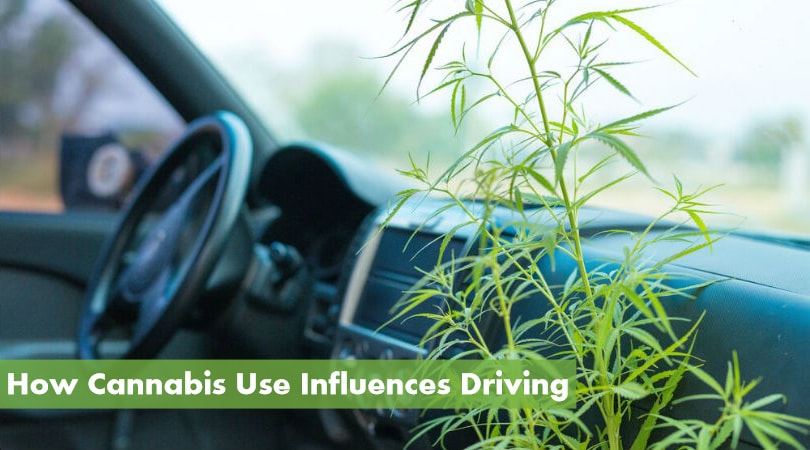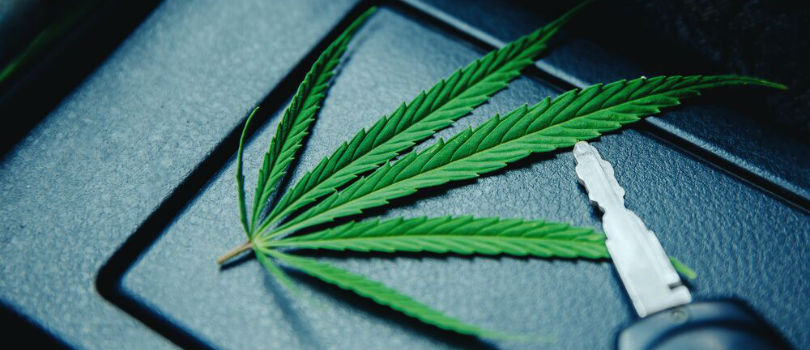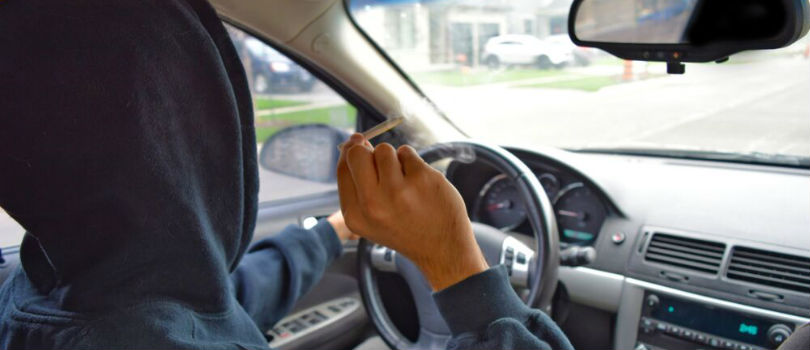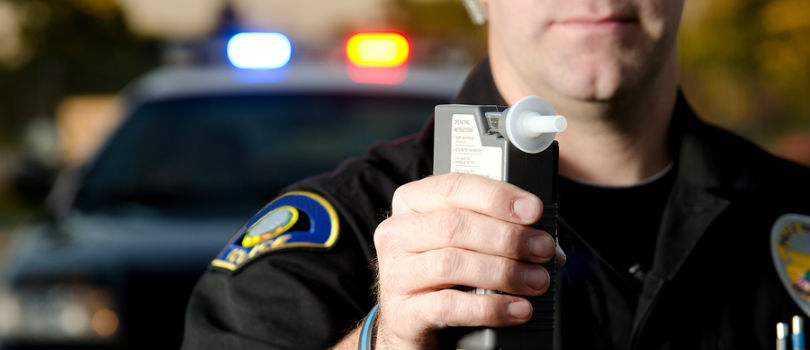How Cannabis Use Influences Driving
The impact of cannabis use on driving performance is likely more of an issue than you think. Due to the increased acceptance of cannabis as a medicinal alternative, along with its recent legalization for recreational use, driving under the influence of marijuana has become more prevalent today than ever. For most people, driving is the most convenient and cost-effective means of transportation available, and regular cannabis use will not always deter people from operating a vehicle. In the hustle and bustle of everyday life, it’s normal to need to get somewhere before your high dies down.
Due to the increased acceptance of cannabis as a medicinal alternative, along with its recent legalization for recreational use, driving under the influence of marijuana has become more prevalent today than ever. For most people, driving is the most convenient and cost-effective means of transportation available, and regular cannabis use will not always deter people from operating a vehicle. In the hustle and bustle of everyday life, it’s normal to need to get somewhere before your high dies down.
Overall, there is a mixed attitude when it comes to acknowledging how cannabis affects driving performance. Some marijuana users acknowledge the potential dangers of driving under the influence, while others claim that it actually makes them better at driving! Multiple studies on the topic of cannabis and driving have also yielded conflicting results, as they have either confirmed or disproved weed’s role in causing motor accidents. Furthermore, while cannabis is now legal in many areas, driving under the influence is not, and the current methods for detecting impairment are inadequate. The topic of driving under the influence of cannabis is thus a very complicated issue that deserves a thorough examination.
An overview of marijuana and driving
It is inevitable that some marijuana users will end up driving under the influence of cannabis as they go about their day. While studies have suggested that the majority of people who drive under the influence of weed are young men, the overall range of cannabis users is much more diverse, and any of them could feel tempted to drive under the influence at some point. Since highs are subjective, and are largely determined by the dosage of THC, the amount of impairment experienced while driving will vary from person to person. Although there seems to be some benefits to how people adjust to driving under the influence of weed, the impairments common with higher THC doses pose enough of a danger to outweigh these benefits.

It is inevitable that some marijuana users will end up driving under the influence of cannabis as they go about their day.
Psychological effects of cannabis and driving
Given that cannabinoid receptors are very prevalent in the cerebellum, an area of the brain which governs cognitive and motor functions, weed will undoubtedly have a significant impact on one’s driving abilities. The level of overall impairment intensifies with higher doses of THC, but doses as low as 5-10 mg have been shown to produce a notable drop in driving performance.
Driving under the influence of cannabis could have a number of effects, including slowed reaction times, impaired short-term memory, difficulty sustaining attention, loss of coordination, and lower performance on complex tasks. Speaking of complex tasks, it just so happens that driving is one of the most complex psychomotor tasks encountered in everyday life; a driver must focus on the road, pay attention to navigational data, and operate the gas, brakes, and steering wheel, all at the same time. In experimental studies, the most common behaviors shown by intoxicated drivers include an inability to stay in their driving lane, ignoring navigational information, and running into roadway obstacles.
However, not all driving tasks are negatively affected by marijuana use. Some studies have suggested that, at low to moderate doses of THC, drivers are still able to adequately assess traffic and the risks involved with driving, and they still retain the awareness to operate brakes and keep a safe distance between other vehicles. Furthermore, people will sometimes employ certain behaviors to compensate for their impairments in driving performance. Intoxicated drivers will often allow more headway between vehicles, drive more slowly, and attempt to pass vehicles less frequently. In some studies, participants have even claimed that the enhanced alertness and focus they get from smoking weed actually makes them better at driving.
Q: Does marijuana affect driving?
A: Yes. Marijuana use has been shown to alter the cognitive and psychomotor functions that are essential to driving.Q: Does marijuana impair driving?
A: Marijuana can in fact impair driving, and the level of impairment varies with the user’s tolerance and higher doses of THC. Lower doses can have minimal to moderate effects, but it can be hard for one to judge their own level of impairment.
Why smoking while you drive isn’t the best idea
Smoking weed while driving is a common activity for many, but it might ultimately do more harm than good. Participants in studies have reported smoking a joint in the car on their daily commute to work or when they go to and from social gatherings, behaviors which eventually led to them getting their licenses revoked and placed in a remedial program. Smoking while driving makes the intoxicating effects of a high more immediate, and leaves a ton of evidence for the police to use against you if you get pulled over. Many people try to refrain from smoking too much so their driving abilities don’t suffer, but accurately judging your own level of impairment is not the easiest thing to do.

Smoking weed while driving might ultimately do more harm than good.
Laws against cannabis and driving
Even though cannabis has been undergoing extensive legalization, driving under the influence is still recognized as being potentially unsafe, so it’s considered a criminal offense in most cases. Laws differ by country and state, but most of them define a maximum level of THC in the bloodstream where it is considered safe to operate a vehicle. Other than that, law enforcement officers use their own discretion when determining if someone has been driving under the influence.
The legality of cannabis and driving worldwide
The legal limits of blood alcohol concentration while driving are relatively consistent around the world (usually 0.02 or 0.05% BAC), but there is no recognized standard when it comes to marijuana. Some countries–such as France, Spain, and Italy–have a “zero tolerance” policy, meaning that any driver testing positive for marijuana will be fined and have their license revoked. On the other hand, countries such as the United States, United Kingdom, and Switzerland define weed intoxication as exceeding a certain limit of THC concentration in blood or urine. Austria represents a rare case, as no such limit is defined, and marijuana use is generally allowed as long as it doesn’t impair driving.
How long should I wait to drive after taking cannabis?
Studies have indicated that the most severe cognitive and psychomotor impairments occur in the first hour after smoking weed, and for the first two hours after consuming edibles. It is during this initial period of intoxication that most law enforcement agencies deem cannabis users to be unfit to drive. However, the most significant performance deficits from cannabis use take between three to four hours to completely subside, so if you’re aiming to be safe, it would be best to wait a little longer than the law dictates.
How the police check for cannabis use
Since there is currently no quick, reliable method to test for cannabis use (like a breathalyzer for alcohol), police usually make their own observations to decide if someone is driving impaired. They might notice erratic driving behavior and pull the driver over, or they could grow suspicious of cannabis use during a routine traffic stop due to a strong weed smell or the driver showing physical symptoms of intoxication.
After initiating a conversation with the driver, if the officer still suspects that they’re under the influence of cannabis, they will ask them to leave the vehicle and perform a field sobriety test. If the officer is convinced they were driving under the influence, they will arrest the driver, and will typically mandate a blood or urine test to confirm the presence of cannabis. However, a warrant is sometimes required before taking samples of bodily fluids. Even if a drug test is not administered, a well-trained police officer can still gather enough evidence to prosecute a suspected offender.

A well-trained police officer can still gather enough evidence to prosecute a suspected offender.
Why marijuana driving laws need to be improved
There are a number of issues when it comes to defining and enforcing laws related to driving under the influence of cannabis. Studies have repeatedly indicated that THC levels in blood and bodily fluids are unable to reliably prove impairment, yet many countries still depend on this measurement to prosecute drivers. THC is detectable in the bloodstream for up to seven days, and up to two months in urine, making tests a poor indicator of recent cannabis use or intoxication. Alcohol blood levels are a good indicator of intoxication level, but the same cannot be said for marijuana.
Given how the law is set up currently, a regular cannabis user could be wrongfully charged with a DUI if they are given a compulsory drug test. This is only possible because marijuana is dealt with like it’s alcohol, even though the two are fundamentally different. Based on this, it is clear that many improvements need to be made to marijuana driving laws. These much needed changes seem to be coming about in the United States, where a new, more accurate field test for marijuana intoxication is being developed. These new methods will, according to the company developing the test, “balance fairness and safety”.
Drivers who use medical marijuana
Exceptions are sometimes made for drivers who use marijuana for medical purposes. Legal medical marijuana is often used as an alternative treatment for chronic diseases such as cancer, AIDS, and multiple sclerosis, and it is also used to treat psychiatric conditions such as depression and anxiety. Since patients take as much weed as necessary to alleviate their symptoms, levels of potential impairment will vary when driving. The amount of marijuana used depends on disease severity and patient tolerance, and the method of intake varies as well. Some patients opt to smoke cannabis, while others are prescribed CBD oil sprays, which is often used to treat multiple sclerosis. CBD oils contain only marginal amounts of THC and do not produce a high, so using it will not impair driving performance. Additionally, some states in the U.S. will not punish medical marijuana patients if traces of THC are found in their bloodstream, even if they have zero tolerance laws.
Even though the level of driving impairment experienced by medical marijuana users isn’t constant, most researchers and clinicians recommend taking a cautious approach. A review on medical marijuana use concluded that medical marijuana users should wait at least eight hours after achieving a high before they attempt to drive. While this suggestion isn’t necessarily practical, it is at least a safe one. Medical marijuana can significantly improve a patient’s quality of life, and being able to drive while focused and pain-free is a big part of this improvement.

Using CBD oil will not impair driving performance.
CBD’s role in cannabis and driving
CBD (cannabidiol) is a cannabinoid present in marijuana that doesn’t produce the psychoactive effects of THC. CBD oils provide a number of therapeutic benefits, and are commonly used as alternatives for treating pain, anxiety, and insomnia, as well as chronic diseases such as epilepsy. Many medical marijuana users depend on CBD to be able to drive without pain, cognitive deficits, or muscle spasms.
Studies have demonstrated that drivers who use CBD oil show no significant impairment to their driving ability. However, all CBD oils contain traces of other cannabinoids, including THC, which is the main cannabinoid measured in drug tests. While it is practically impossible for CBD to impair your driving ability, a drug test could yield a positive result if it contains an unusually high concentration of THC. Other than that, there are no real dangers to driving after using CBD oil.
Q: Can you drive on CBD?
A: CBD doesn’t produce the psychoactive effects that THC is known for, so you should be able to drive just fine. Just remember that there could be traces of THC in CBD products.
The dangers of driving on weed
All things considered, driving under the influence of cannabis is potentially dangerous. The psychological impairments suffered by drivers make them incredibly susceptible to getting into car accidents. Countless research studies have concluded that driving under the influence of cannabis greatly increases the risks of getting into a car crash. One study in particular estimated that the psychomotor and cognitive impairments that come along with cannabis use increase individual crash risk by as much as 20-30%. Moreover, cannabis is the second most common psychoactive substance found in the bloodstreams of people involved in serious or fatal car crashes, behind only alcohol. While no direct correlation between marijuana use and car accidents has been confirmed, these statistics undeniably prove the potential dangers of driving under its influence.
Cannabis and driving remains an important issue moving forward
It is important that people worldwide be informed of how driving under the influence of cannabis presents a safety issue. At the same time, laws regarding marijuana and driving need to appropriately reflect these risks. As attitudes towards cannabis become more and more liberal, and more people start using it for medicinal and recreational purposes, it is vital that these issues be made known for the sake of everyone’s well-being.
